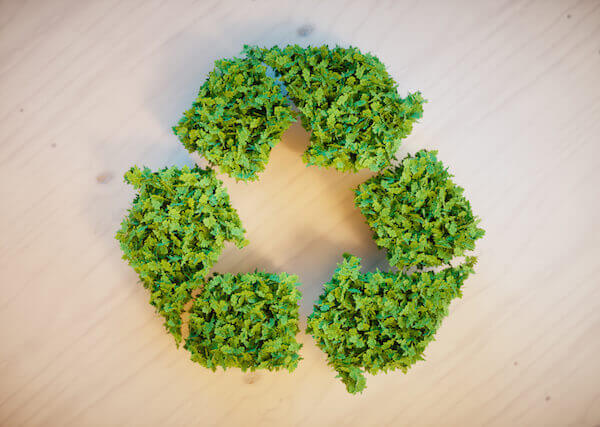
Recycling Yard Waste
Going green has become a huge part of our lives. With constant talk of global warming and an increase of general knowledge about the environment, people worldwide are making great strides to take better care of the planet. Restaurants have made the switch from styrofoam to-go boxes to biodegradable containers, coffee shops now encourage bringing in your own cups, and countless businesses have gone paperless. One of the easiest ways to do your part in the effort to green is by recycling.
When you think “recycling,” the first things that come to mind are plastic containers, soda cans, and glass bottles. Big green bins with arrows going around in a triangle shape. Recycling has become a part of our daily routine and to some folks, maybe even second nature. It is a common sight to see recycling bins next to garbage cans in public places and also in homes. Recycling is on the rise. And it has done wonders for improving our environment. Protecting Earth from the harmful toxins that we as humans managed to create is fantastic. But what about protecting Earth from things actually created by Earth?
When natural waste is collected it is not always disposed of in eco-friendly ways, so it would do some good to research your collection service. Although yard waste such as grass clippings, leaves, and branches are biodegradable, it is extremely important that all waste is recycled in the best and most beneficial way. Recycling yard waste goes beyond just ridding the planet of unwanted materials. There are several different methods of recycling yard waste and other natural wastes that can benefit our lives and our planet in a variety of ways.
Composting
This method of disposing of not only yard waste, but most natural products is definitely the most user-friendly way of making the most out of your garbage. Composting is used to make plant fertilizer out of decayed organic material. It is cheap, easy, and a great way to grow beautiful plants. This method is not limited to just yard waste, any natural food waste can be added as well. Things like banana peels, coffee grounds, tea bags, and vegetables can enrich the soil even more. Avoid meats, dairy, and processed food when including food waste in your compost. Composting is good for the environment because it is a natural alternative to harsh, chemical fertilizers, reduces landfill waste, and can lessen household waste by 30%. In order to begin composting, you first need an area on bare earth to begin your pile. Natural organisms need to be able to reach the pile to help break down the waste and also to transport it to the surrounding land. Add your waste in layers and keep the pile moist. If it has not rained for a bit, give it some water and every few weeks turn it over with a pitchfork or shovel to add oxygen. Click here for more information on different methods of composting as well as how to get the most out of your compost pile.
Eco-friendly Waste Management
Not everyone has the land or materials to compost. If that is the case, research on the services in your area is key. Online is a great tool for learning more about what happens to your waste after it is carried away by the big trucks. You could even give your local waste management company a call and ask where they take yard waste to be disposed of. Many waste management companies have began pairing up with agriculture services to try and encourage composting. Another commonality of waste management departments is mulching. They create mulch out of yard waste collected at homes and then offer free mulch to residents.
Waste Based Energy
A new and innovative way of making the most out of waste is by turning it into something useful. A tool called an “anaerobic digester” is new to the waste game and actually create energy out of food waste. According to Waste360, anaerobic digestion has become a way of the future for Europe, especially in Germany. Andrea Horbelt of the German Biogas Association has said that 20 percent of Germany’s natural gas could be made from biogas by 2020. Anaerobic digestion works by grinding up the food in a moist environment and breaking down all of the biodegradable material in the absence of oxygen. The result is biogas which can be processed into renewable natural gas and transportation fuels.
There are certain times of the year that yard waste represents 35-40% of solid waste in the U.S. By exploring and implementing creative ways to use our waste, we can not only help the environment but also help ourselves. It is a very common thing in the U.S. to have two different garbage cans at home, one for regular garbage and one for yard waste. There are even times when homes may have more yard waste than household waste. Take a little time to give it some more thought before you waste is taken away in a large truck.